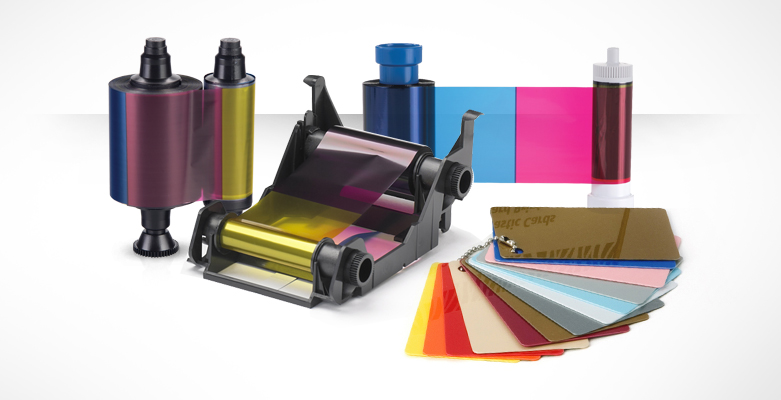Unlike inkjet printers you may be more familiar with, ID card printers use specialized ribbons with a pre-set amount of prints per ribbon. Not sure which one you need? We’ll help you understand the differences.
Even though there are two types of technology an ID card printer may use, both dye sublimation and reverse transfer printing relies on a printer ribbon to create your card’s design. In either type of printer, a printhead heats up and vaporizes the design using the colored panels of the ribbon (in a dye sublimation printer this design is put directly onto the card; in a reverse transfer printer, it’s first printed onto a clear film and then applied to the card).
Which ribbon you need depends on what design you print – check out our overview of the different types of ribbons. For a full-color ID card you’ll need a ribbon with YMCK panels, which stands for Yellow (Y), Magenta (M), Cyan (C), and Black (K). Most ribbons will then have an overlay (O) layer that offers some card protection from scratching and wear and tear, although reverse transfer printers and laminating do not use the overlay panel.
If you wanted a monochrome card, you would choose a monochrome ribbon instead. This type of ribbon would have panels that are all the same color, instead of the different panels of a YMCKO ribbon.
No matter which ribbon you choose, or what your design is, you will always have a print yield (or maximum number of cards you can print with that ribbon). Using minimal colors in your design does not change your print yield – a single card will use a full set of colors no matter what your design may include, so there’s no reason to shy away from using a full color photo or business logo!





